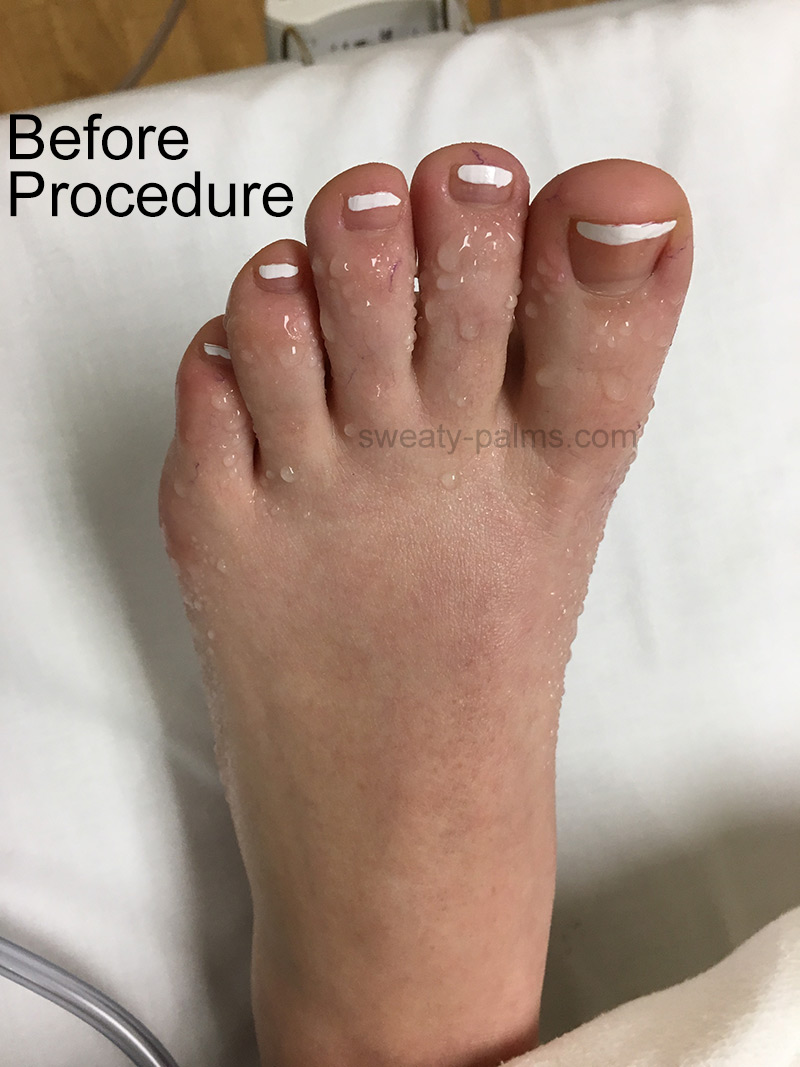Comprehensive Guide to Sweaty Hands Treatment: Proven Dermatology Methods
Comprehensive Guide to Sweaty Hands Treatment: Proven Dermatology Methods
Blog Article
Unveiling the Complexities of Excessive Sweating: A Comprehensive Overview to Medical Diagnosis and Administration
Too much sweating, medically known as hyperhidrosis, is a problem that affects a considerable variety of individuals and can have a profound impact on their lifestyle. While sweating is an all-natural bodily feature, its overactivity in hyperhidrosis provides an unique set of obstacles that frequently go past simple pain. Recognizing the underlying causes, recognizing the signs, and browsing the diagnostic process for hyperhidrosis can be elaborate jobs. In this thorough guide, we will discover the complexities of hyperhidrosis, from its medical diagnosis to the range of therapy alternatives available, clarifying effective management techniques for those coming to grips with this problem.

Recognizing Hyperhidrosis Causes
Hyperhidrosis triggers can be attributed to numerous factors such as genes, hormone imbalances, and specific medical problems. Genetics play a significant duty in main focal hyperhidrosis, where individuals acquire the condition from their household members. By identifying the details factors contributing to too much sweating, healthcare providers can customize therapy plans to deal with the underlying reason, providing alleviation and improving the high quality of life for people affected by hyperhidrosis.
Acknowledging Hyperhidrosis Symptoms

In addition, hyperhidrosis signs and symptoms might materialize in social and emotional distress, as individuals might really feel ashamed or anxious about their sweating, leading to evasion of social scenarios (Exessive Sweating). In addition, duplicated episodes of extreme sweating can result in skin maceration, fungal infections, and an overall decline in self-confidence
Diagnostic Refine for Hyperhidrosis
Initiating the analysis process for excessive sweating involves detailed analysis of the person's medical history and physical evaluation. Inquiring about the beginning, period, and activates of sweating episodes is important to set apart in between primary focal hyperhidrosis and additional generalised hyperhidrosis. Case history ought to also include concerns regarding drugs, medical problems, and household history of hyperhidrosis.
During the physical assessment, particular attention is paid to the locations influenced by sweating. The doctor may analyze the level of sweating, look for signs of underlying problems, and assess the effect of sweating on the person's lifestyle. In addition, specific examinations like the gravimetric examination, starch-iodine test, or skin conductance dimensions might be carried out to measure the amount of sweat generated.
In addition, in cases where secondary hyperhidrosis is believed, extra tests such as blood tests, pee examinations, and imaging researches may be suggested to identify the underlying root cause of excessive sweating. The analysis process intends to properly identify the type and root cause of hyperhidrosis to lead appropriate management techniques.
Treatment Choices for Hyperhidrosis
When resolving extreme sweating, numerous therapy options are available to ease symptoms and improve the individual's quality of life. The therapy method for hyperhidrosis relies on the intensity of symptoms and the person's response to first treatments.
Topical treatments, such as aluminum-based antiperspirants, are frequently advised as the initial my explanation line of protection for handling mild situations of hyperhidrosis. These products function by plugging the sweat air ducts, hence minimizing the amount of sweat that reaches the skin's surface. For people with a lot more serious symptoms, oral drugs like anticholinergics might be prescribed to help decrease sweating. These medicines can have side results and are not suitable for everybody.

Effective Monitoring Approaches
To successfully take care of hyperhidrosis, a comprehensive and individualized treatment plan customized to the client's certain needs and reaction to previous treatments is vital. This plan might include a mix of therapeutic methods, including lifestyle modifications, topical therapies, dental medications, botulinum toxic substance shots, iontophoresis, and in severe situations, surgical treatments like sweat gland removal or sympathectomy. Way of life adjustments such as using moisture-wicking apparel, using antiperspirants, and exercising stress-reducing strategies can enhance clinical interventions. Topical antiperspirants including aluminum chloride are commonly the first-line therapy, with stronger formulas readily available for immune instances. Dental drugs like anticholinergics might be suggested for generalised hyperhidrosis. Botulinum toxin injections work for focal hyperhidrosis, supplying short-term relief by blocking the launch of acetylcholine. Iontophoresis, involving the use of a reduced electric present view publisher site to decrease gland task, can be helpful for both palmoplantar and axillary hyperhidrosis. Surgical options are typically reserved for extreme, refractory cases and call for cautious consideration of benefits and dangers. A multidisciplinary strategy entailing skin specialists, main care physicians, and, if needed, specialists, can enhance the monitoring of hyperhidrosis.
Final Thought
In verdict, hyperhidrosis is a problem characterized by too much sweating, which can considerably affect a person's high quality of life. With correct diagnosis and administration methods, individuals experiencing from hyperhidrosis can discover relief and enhance their total well-being.
Too much sweating, clinically known as hyperhidrosis, is a problem that impacts a significant number of individuals and can have an extensive effect on their top quality of life. By determining the specific factors adding to excessive sweating, healthcare carriers can visit this site right here tailor therapy plans to deal with the underlying reason, using relief and boosting the high quality of life for individuals affected by hyperhidrosis.
Hyperhidrosis, identified by extreme sweating past what is necessary for managing body temperature, can dramatically impact a person's quality of life. Asking about the onset, duration, and triggers of sweating episodes is critical to separate between main focal hyperhidrosis and secondary generalized hyperhidrosis. Exessive Sweating.In conclusion, hyperhidrosis is a problem characterized by excessive sweating, which can significantly affect an individual's high quality of life
Report this page